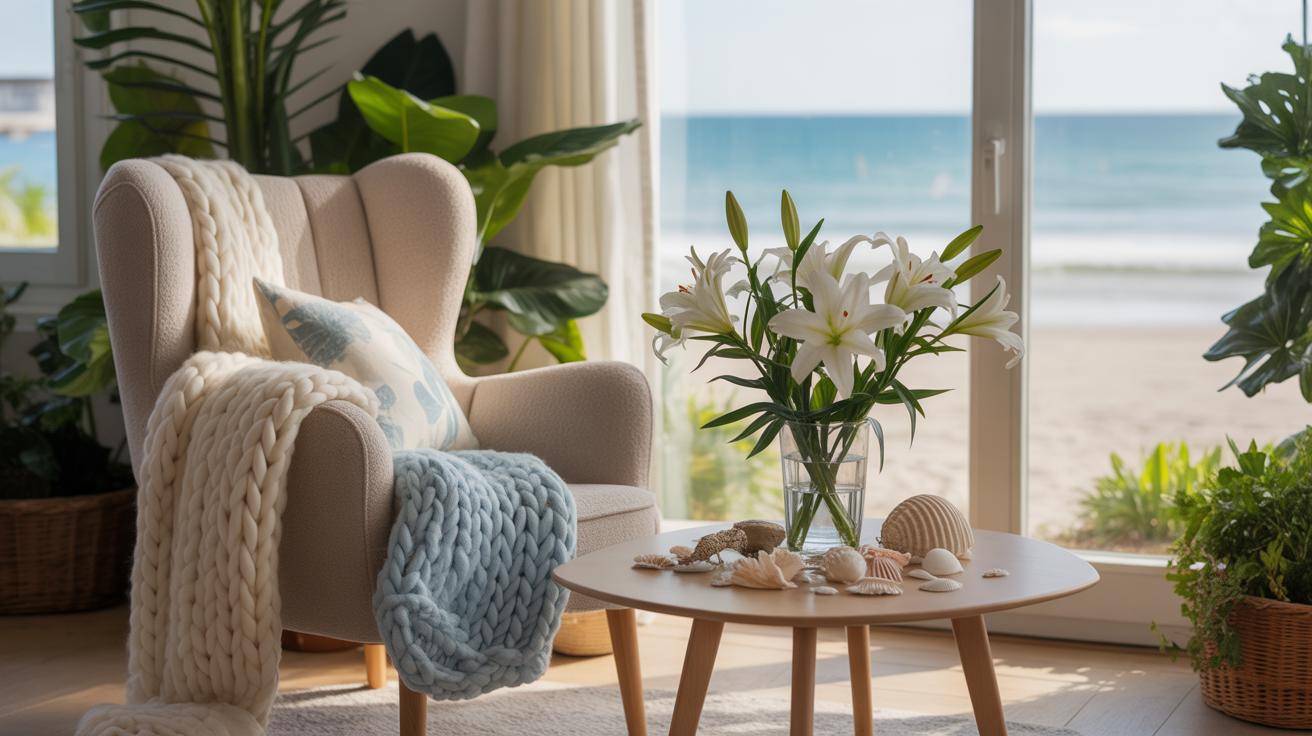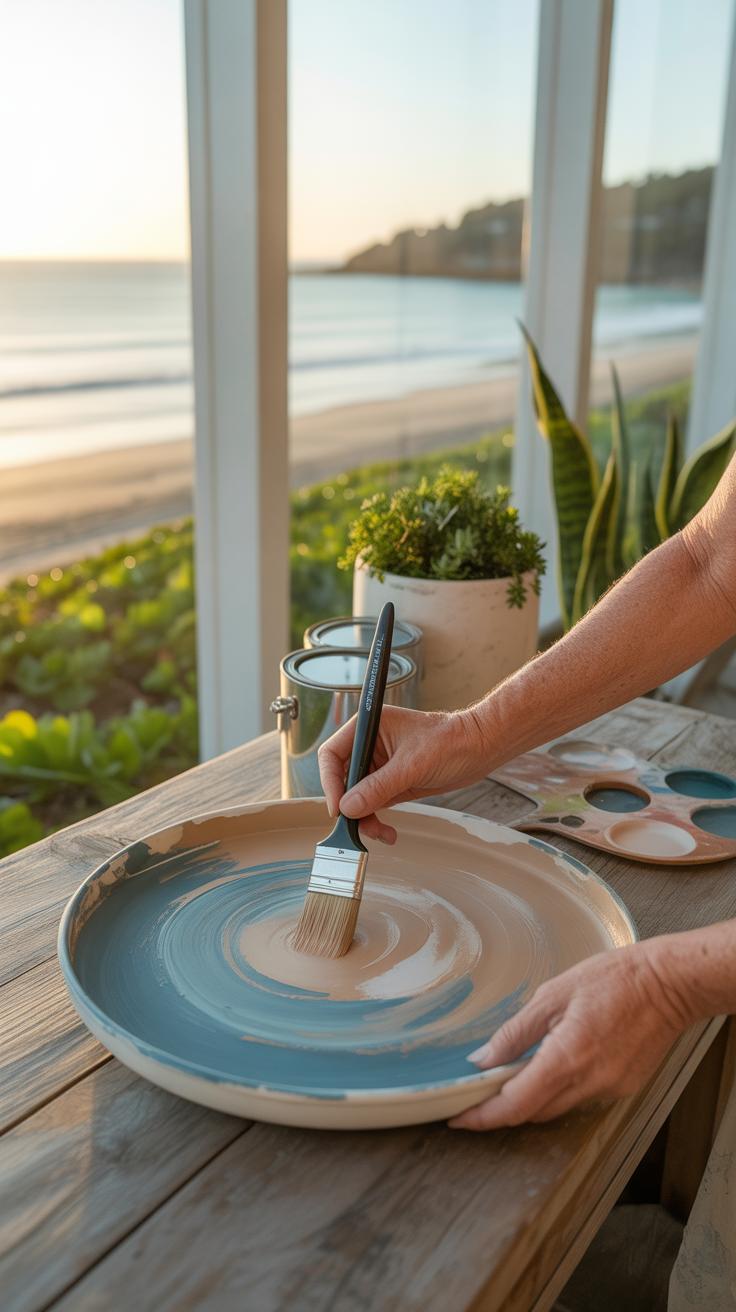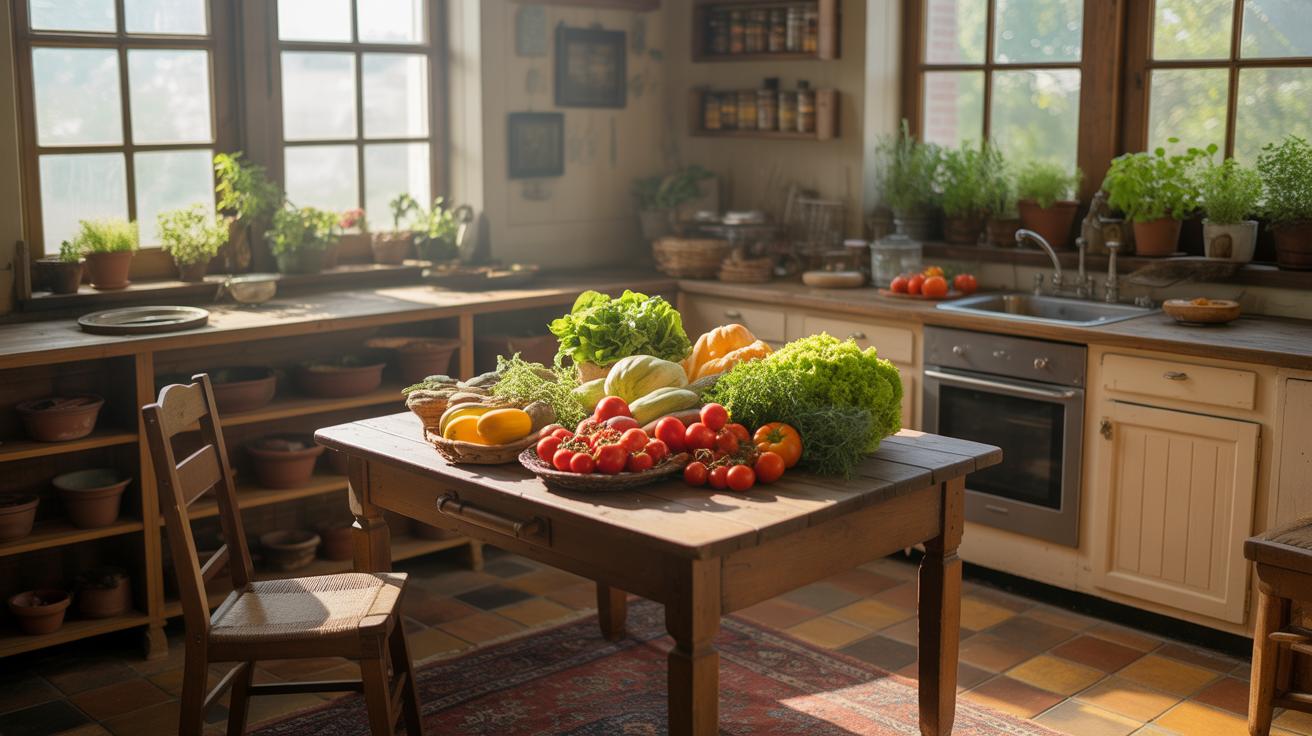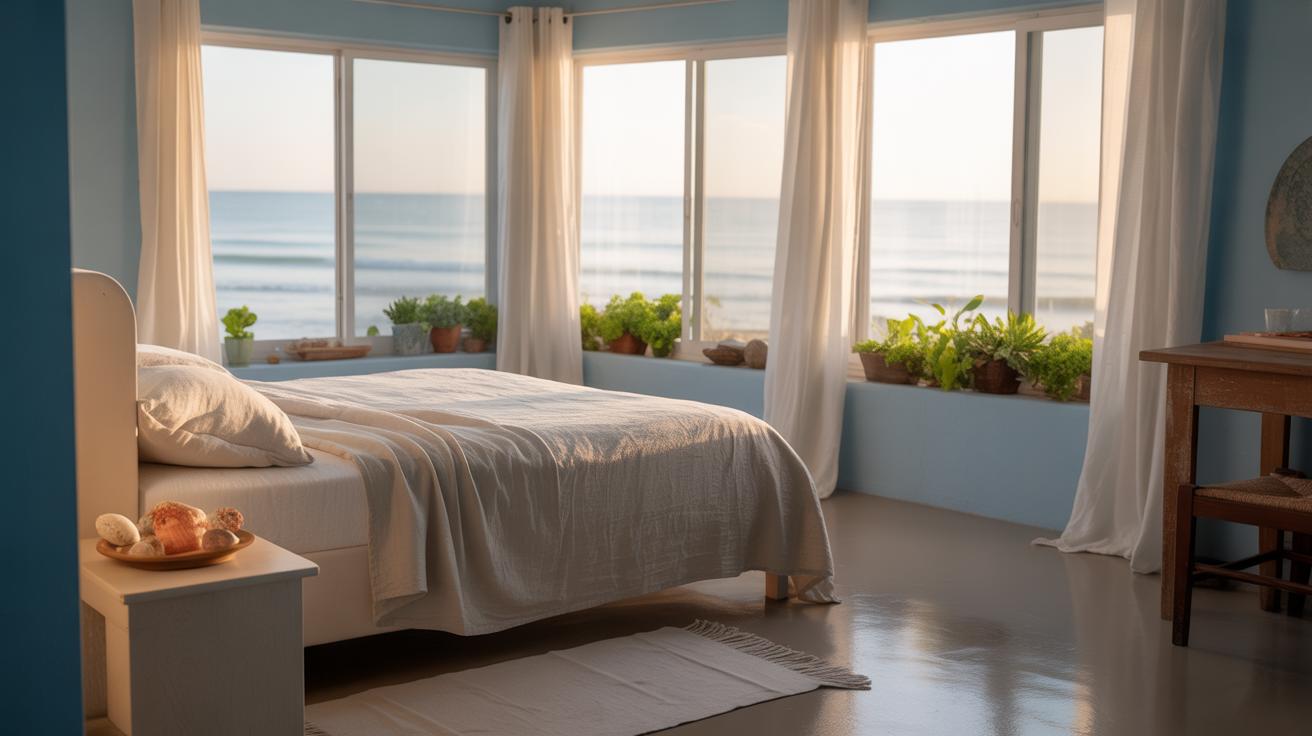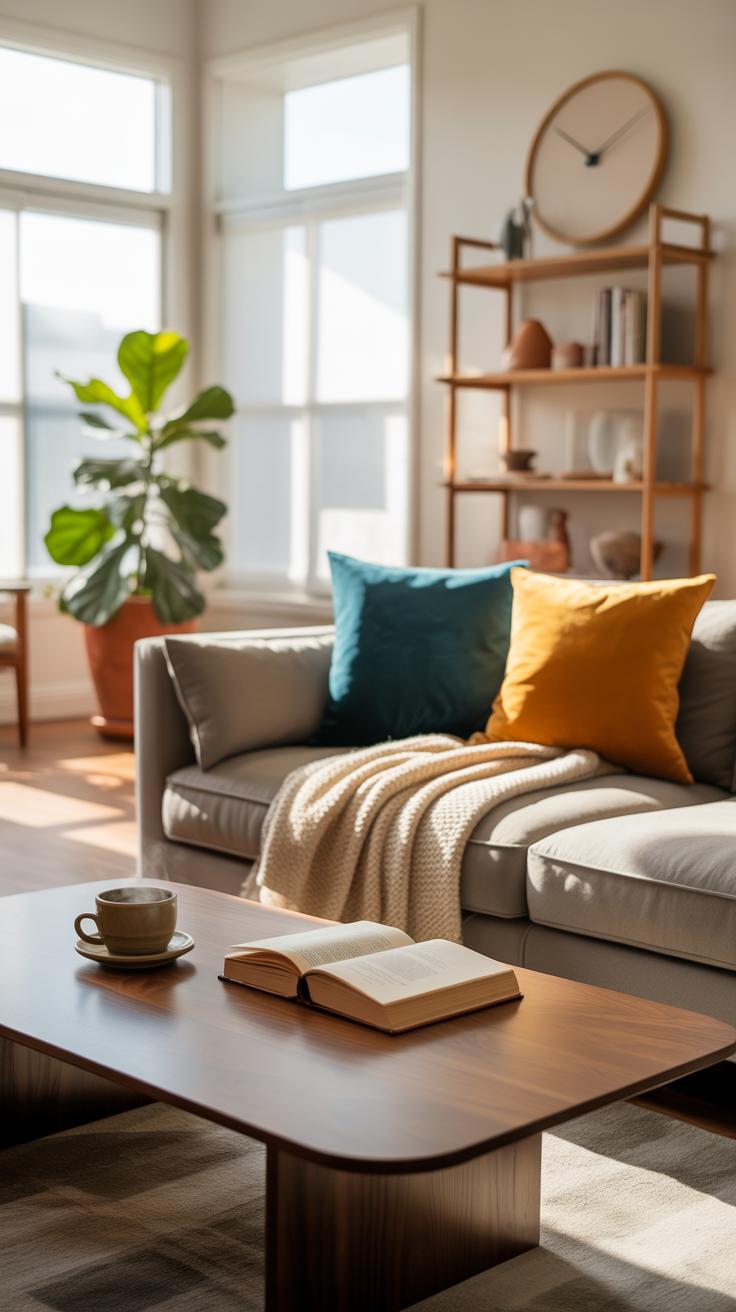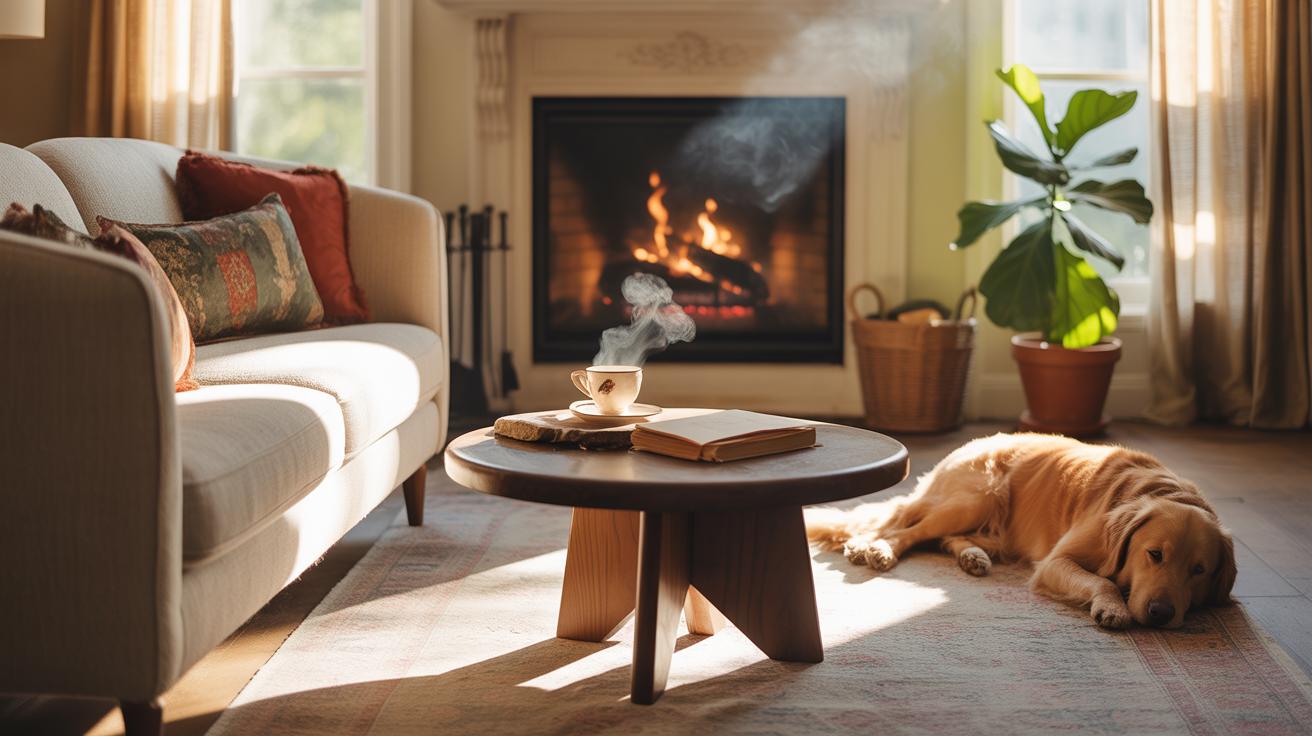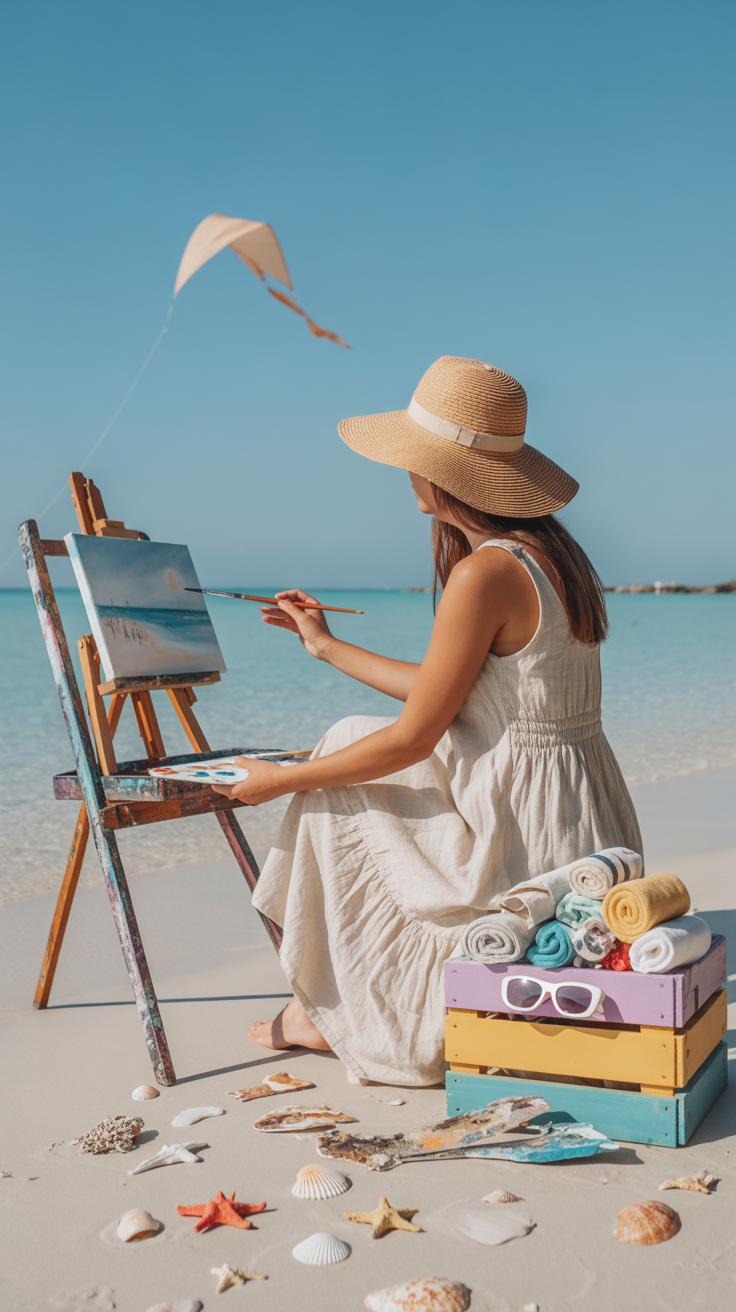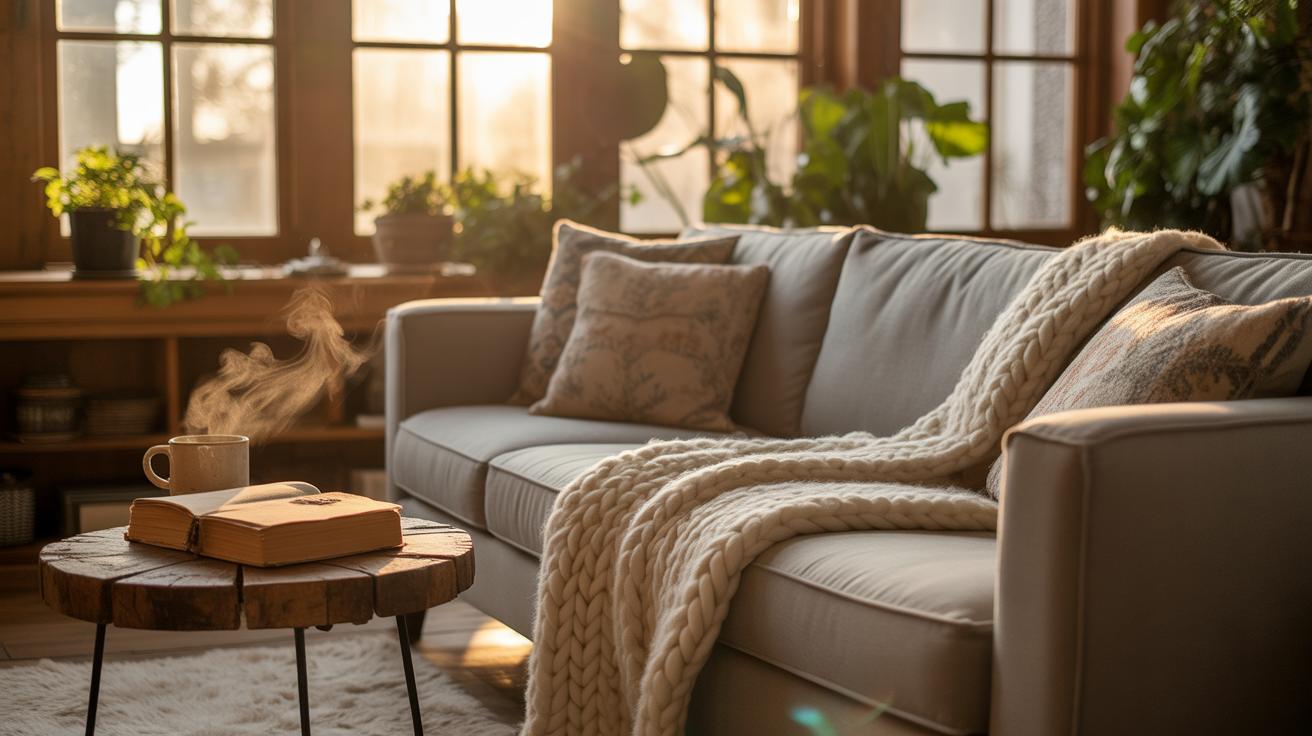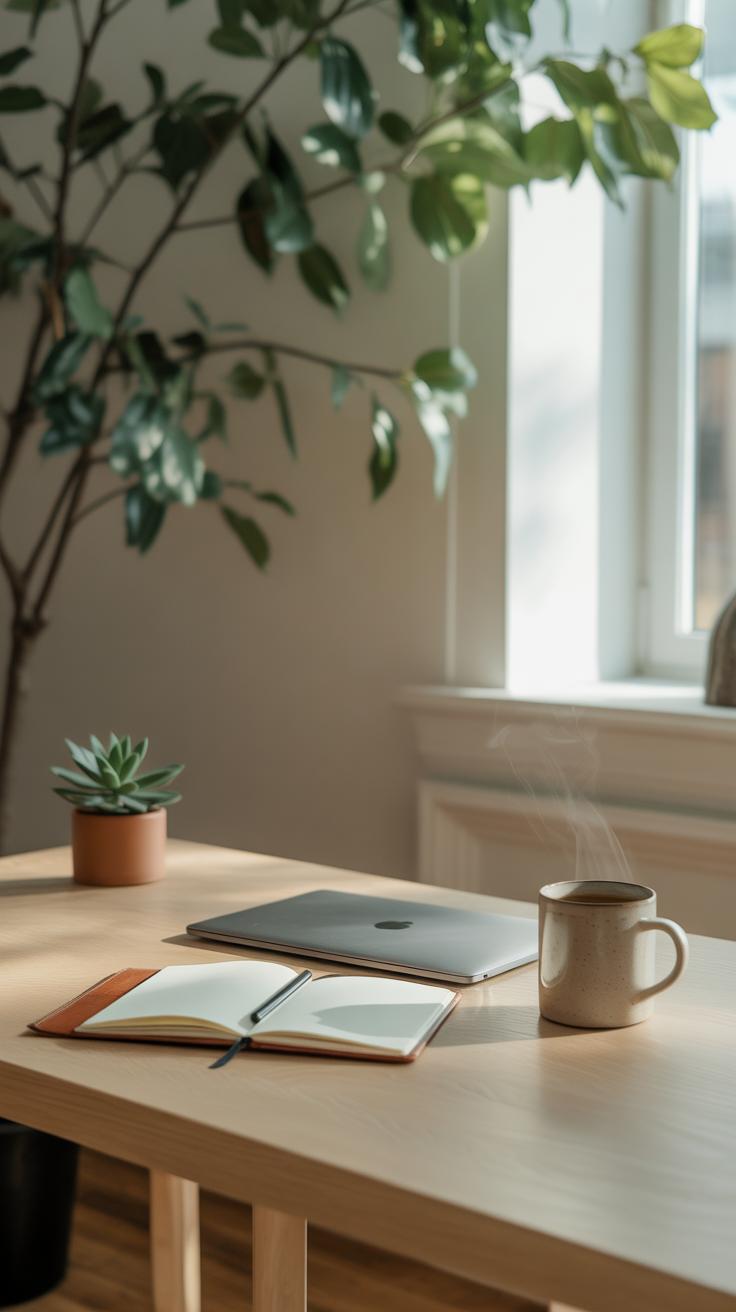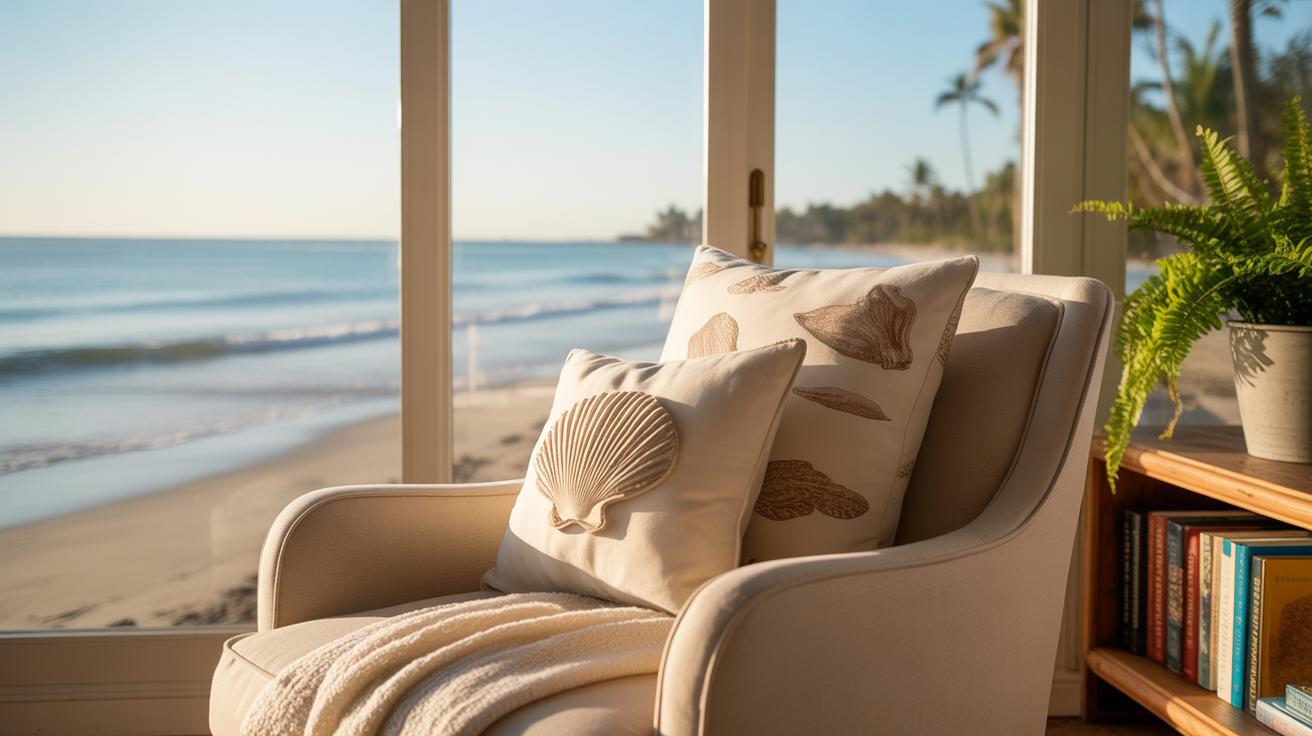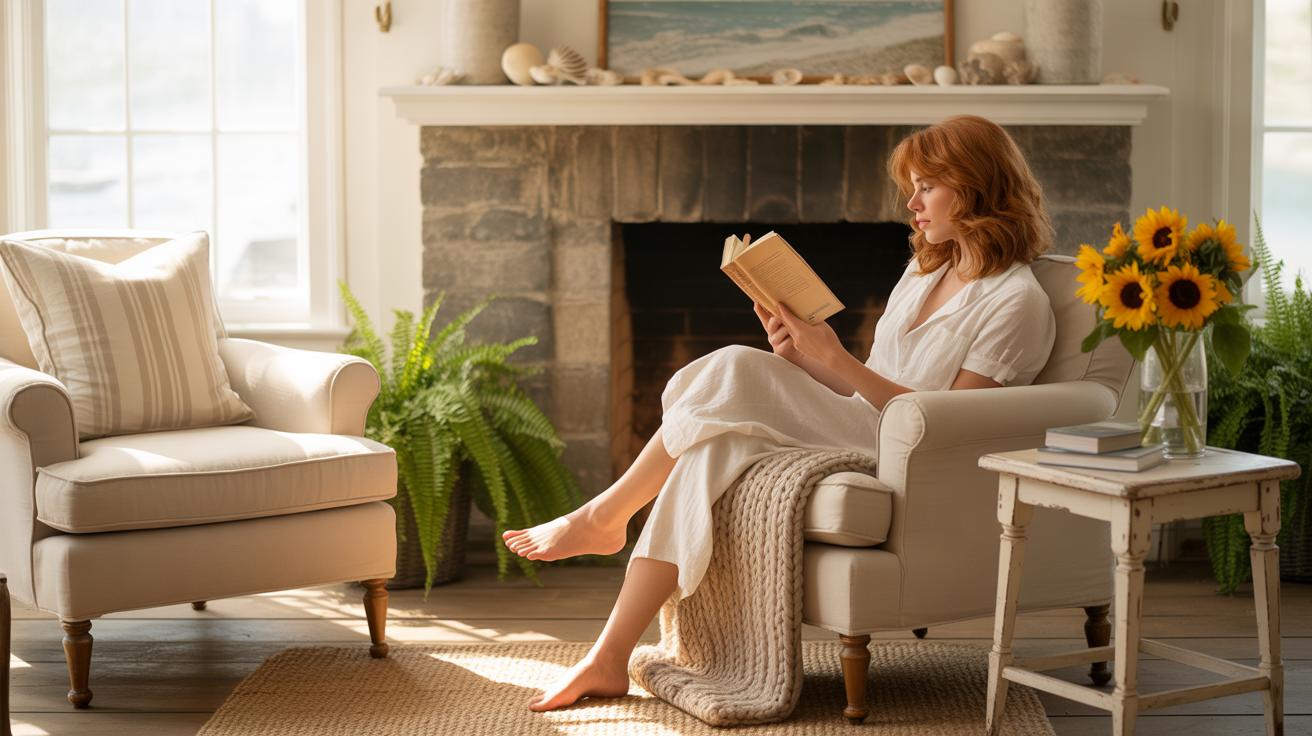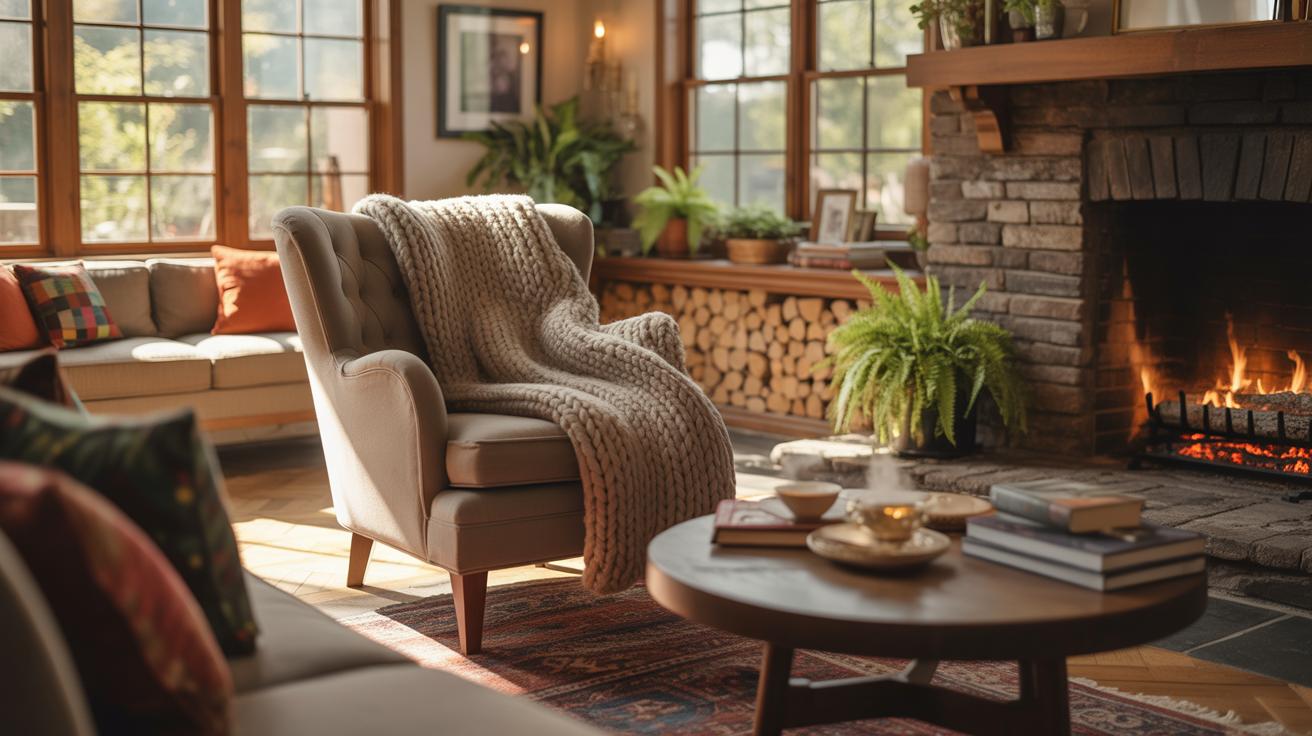Introduction
Seaside cottages offer a unique charm that brings the calm and beauty of the coast into your living space. Decorating your home with seaside cottage ideas can create a relaxing atmosphere that feels like a retreat every day. This article explores practical tips and styles for creating your own seaside cottage look, blending comfort with coastal aesthetics.
From choosing the right colors and materials to selecting furniture that fits the theme, you will learn how to transform your home into a cozy seaside haven. Each chapter focuses on key elements of seaside decor that you can apply to your own home to make it feel fresh and inviting.
Choosing Coastal Colors
When it comes to color choices for a seaside cottage, soft neutrals and blues really stand out as the go-to palette. They aren’t just pretty—they actually mimic the natural surroundings you’d find along the coast. Think of sandy beaches, weathered driftwood, and the ever-changing sea. Soft neutrals—like warm creams, pale beiges, and muted grays—reflect the shore’s subtlety. They bring a calmness that feels honest and unforced, a bit like the quiet moments you catch while watching the tide roll in.
Blues are probably the most iconic coastal color, but not just any blue. Light, dusty blues or gentle aqua shades work best. They suggest the sky on a partly cloudy day or shallow, sunlit waters. Together with neutrals, these blues create a soothing background that feels expansive and breathable—almost like the fresh ocean air hustling through open windows.
Adding accent colors? That’s where things get interesting. You don’t want to overpower the natural vibe, but a splash of life helps. Soft coral, sandy terracotta, and even some muted greens—think sea glass—can lift a room without clashing. These colors remind us of beachfront flora, tiny crabs scuttling on rocks, or the subtle warmth of a sunset. Small touches, like colorful cushions or a vase, can make the room feel lived-in and welcoming.
So, would you choose an all-blue room, or mix in a few natural tones? What colors make your own memories of the coast feel real? These questions can guide your choices—because seaside doesn’t just mean blue and white. It’s softer and more layered than that.
Selecting Textures and Materials
When it comes to seaside cottages, textures and materials play a huge role in creating that relaxed, lived-in vibe. You might find yourself drawn to natural fibers like linen, cotton, and wicker. These fabrics not only feel breathable and light, but they also have this easygoing quality that fits the coastal mood. Linen curtains that flutter in the breeze or cotton slipcovers on your sofa can make a room feel fresh, yet cozy. Wicker baskets and chairs add an element of casual charm, almost like they’ve been collected over many summers by the shore.
Wood is another key player. Weathered, distressed finishes—think sun-bleached driftwood or paint gently peeling off floorboards—bring authenticity to the space. They tell a story, or at least hint at one. Maybe your coffee table looks worn because it’s been around for decades, or your wall paneling shows subtle cracks, reminding you of salty air and changing tides. This kind of rustic texture grounds your interiors, preventing them from feeling too staged or cold.
Try mixing smooth cotton cushions with a rougher, sanded wood frame. Or combine smooth linens with a weathered wicker chair. The contrast invites you in, gives each item more personality. It can feel a bit rough around the edges, sure, but that imperfection adds warmth. If you’re hesitant about going full distressed, start small—perhaps a framed mirror with a chipped whitewashed frame or a side table with scuffed legs. These touches layer your space with texture and history without overwhelming your overall design.
Furniture for Function and Style
Practical Seating Choices
When picking seating for your seaside cottage, comfort is key—but don’t let style take a backseat. You’ll want pieces that invite relaxation after a day by the water, but also fit with the casual, breezy vibe that defines cottage living. Think about slipcovered armchairs or sofas in light, washable fabrics. Linen or cotton blends work well, as they feel fresh but can handle a bit of wear and occasional spills. Wicker or rattan chairs add texture and instant charm, but they should come with cushions for comfort—that hard weave isn’t the best all on its own.
Durability matters too. Outdoor-inspired seating, like treated wood benches or metal-framed chairs, can stand up better to humidity and sand tracked indoors. Still, your cottage shouldn’t feel like a porch—comfortable padding makes a difference. Does a long, cushy window seat with storage underneath sound interesting? It’s a cozy spot for reading and doubles as a clever way to save space.
Storage and Multi-Use Pieces
Space tends to be tight in seaside cottages, so furniture that does double duty can be a real lifesaver. Take ottomans with hidden storage for example. They make lounging easier while keeping blankets or games tucked out of sight but near at hand. Coffee tables with built-in shelves or drawers offer a neat solution for magazines, coasters, or even kid’s toys without cluttering the room.
Don’t forget benches or trunks near entryways that serve as both seating and storage for muddy boots or beach towels. Some pieces combine seating, surface, and storage all in one—like a convertible daybed or a bench with cubbies underneath. They’re practical without disrupting the laid-back feel you want.
Still, I wonder if sometimes too much focus on multi-use furniture risks creating a crowded look? Finding the right balance between ease and openness in a cottage setting takes a bit of trial. What works well for you might depend on how often you host, or whether you have children or pets tagging along.
Incorporating Coastal Motifs
Marine Life and Nautical Themes
Coastal motifs often draw from the ocean’s treasures—sea shells, starfish, boats, and ropes are classic elements you might already picture. But using them in moderation makes a real difference. Just a few well-placed shells in a glass bowl or a single large starfish framed on the wall can bring an authentic seaside feel without turning your space into a museum.
Ropes can add texture and depth—think curtain tiebacks or drawer pulls made from knotted rope. Nautical models, like small sailboats or fishermen’s nets hung casually, work well when mixed with simple furnishings. The key is balance. Too many can feel kitschy, but just enough echoes that relaxed coastal vibe effectively.
Subtle Patterns and Art
Subtlety often wins when it comes to patterns and artwork in a seaside cottage. Soft stripes reminiscent of beach umbrellas or gentle wave designs on cushions add interest but keep the space calm. Look for art that hints at the coast—a watercolor of a shoreline, abstract shells, or understated maps of tide zones that don’t scream “nautical” but suggest it quietly.
Sometimes less is more. A single large piece in muted tones can ground a room just as well as several smaller colorful prints. You might hesitate to go too bold, but incorporating gentle coastal patterns keeps your space inviting, not overwhelming. Finding that right balance can take a little trial and error, but it’s worth it to avoid visual noise.
Maximizing Natural Light
Natural light plays a key role in coastal decor. It enhances the fresh, airy feeling that defines seaside cottages, making your space feel more open and inviting. Sometimes, when you live by the coast, the days can be gray or overcast more often than you’d like. That makes it all the more important to bring in as much daylight as possible.
One way to do this is through thoughtful window treatments. Light, sheer curtains that flutter softly let sunlight pass through without compromising privacy. You might prefer simple linen or cotton fabrics in pale hues. Blinds with adjustable slats can also work, allowing you to control how much light filters in throughout the day.
Reflective surfaces offer another approach. Mirrors placed opposite windows bounce daylight deeper into your rooms, brightening darker corners. Light-colored walls and furniture—think soft whites, muted blues, or sandy neutrals—help scatter light rather than absorb it. Sometimes, I wonder if too many shiny surfaces could feel cold. But in coastal spaces, they often strike the right balance between brightness and warmth.
Have you noticed how a well-placed mirror changes the feel of a room? It’s almost like daylight multiplies. So, to lift your seaside cottage style, think beyond just letting light in—consider how your choice of treatments and surfaces moves that light around, too.
Outdoor Spaces with Charm
Extending the seaside cottage style beyond the walls makes your outdoor areas feel like a natural part of the whole home. Porches and gardens offer great spots to invite fresh coastal vibes that blend with your indoor decor yet have their own laid-back rhythm.
Think about simple touches that echo the shore. Weathered wooden porches with soft, breezy curtains can create that retreat feel, while garden paths lined with driftwood or smooth stones keep things casual and authentic.
Coastal Plants and Accessories
Choosing plants that thrive near the coast adds life without constant fuss. Grasses like blue fescue or ornamental pampas handle salty air well. Succulents and rosemary also fit in easily. They survive dry spells and bring texture, which feels more natural than overly polished blooms.
Accessories here don’t have to be complex. Try placing lanterns or glass jars filled with shells and sand. Maybe a weathered clay pot or two with a splash of greenery. Small nautical touches—like a buoy or a simple rope detail—can work but don’t overdo it. It’s okay if it feels a little spontaneous, like you found items during a casual stroll along the beach.
Outdoor Furniture
Outdoor furniture needs to stand up to the elements, so you want materials that resist sun, wind, and salt. Teak is a strong choice, aging gracefully with a soft patina. Aluminum or powder-coated metal pieces offer a lighter look and avoid rust but might feel a bit colder—so layer cushions in muted stripes or soft whites.
Wicker or rattan furniture suggests classic cottage charm, but in coastal zones, synthetic fibers last better. I’ve seen people pick a simple wooden bench with cushions for early mornings and evenings; it’s an easy way to connect with the outdoors without too much maintenance.
When setting up your outdoor space, ask yourself: which spots invite me to pause? Where can I feel the breeze, hear the waves (or at least imagine them)? Designing with comfort and ease in mind lets you extend that relaxed seaside spirit outside—and that’s what really matters.
Lighting to Set the Mood
Soft and Warm Lights
The right lighting can really change how a seaside cottage feels. Soft bulbs, the kind that cast a gentle, warm glow, help mimic the subtle tones of natural daylight. It’s surprising how much a soft lamp can make a room feel cozy—more inviting. You might think it’s just about brightness, but the temperature of the light matters too. Bulbs around 2700K to 3000K often work best to create that warm ambiance without overwhelming the senses.
Try using table lamps with fabric shades or floor lamps that diffuse light slowly, so it doesn’t hit you too hard. You don’t want harsh overhead lights stealing the softness you’re after. And if you can, add dimmers—being able to adjust the brightness instantly shifts the mood. Sometimes, softly glowing walls and corners make the entire space feel more lived-in and, well, comforting. I’ve noticed that on chill evenings, a dim, warm light can almost make you forget the outside chill.
Feature Lighting
Accent lighting has this sneaky way of drawing your eye to specific spots or objects—and that’s exactly why it works well in a seaside cottage. Use small spotlights or wall-mounted lamps to highlight a seashell collection, a framed coastal photograph, or that charming driftwood piece you found on a beach walk. Accent lights don’t need to be bright. In fact, subtlety can be more effective.
Think about places where you want to create focus or a little depth—maybe a reading nook or a shelf with your favorite nautical keepsakes. By softly spotlighting these, you give your space layers. Those layers make your cottage feel personal and unique. It’s not about lighting everything equally; it’s about creating moments within the room where your eyes naturally want to pause. Doesn’t that make your home feel a bit more like yours?
Personal Touches and Details
When you think about a seaside cottage, the charm often comes from those little personal details that make it truly yours. It’s not just about painted walls or furniture; it’s about the memories you bring in, the stories each item silently tells. You might find yourself hesitating, wondering where to start—sometimes the simplest objects hold the greatest meaning.
Consider displaying souvenirs from your coastal trips: smooth shells gathered on quiet mornings, driftwood pieces shaped by tides, or even weathered glass fragments from beachcombing adventures. Photos pinned casually on a corkboard or framed snapshots of sunsets can add a warm, personal layer. Artworks made by family or local friends catch the eye differently than mass-produced prints. They hardly need to be perfect; their imperfect edges and quirky strokes often bring more life.
Handcrafted items, especially, help craft a sense of authenticity. Maybe a woven basket from a nearby artisan or pottery made in a coastal town you love. Such pieces do more than decorate—they create a subtle connection to a place and its people, blending comfort with personality. When you hold or use these objects, it’s like welcoming a small piece of the coast into your home.
Think about the stories behind the things you treasure. How will you show those to visitors? Those stories, more than the objects themselves, can turn a seaside cottage from just a decorated space to a deeply personal retreat.
Conclusions
Bringing seaside cottage style into your home is a rewarding way to enjoy the peaceful vibe of coastal living. By using natural colors, comfortable furniture, and thoughtful decorations, you create spaces that welcome calm and relaxation. Each element, from textures to lighting, contributes to a harmonious and fresh environment.
Your home can become a seaside escape by embracing simplicity and practical ideas shown throughout this article. Start with small changes or a full makeover to reflect your personal style and capture the essence of a coastal cottage. This style invites you to slow down and enjoy the tranquility of the seaside within your own walls.

